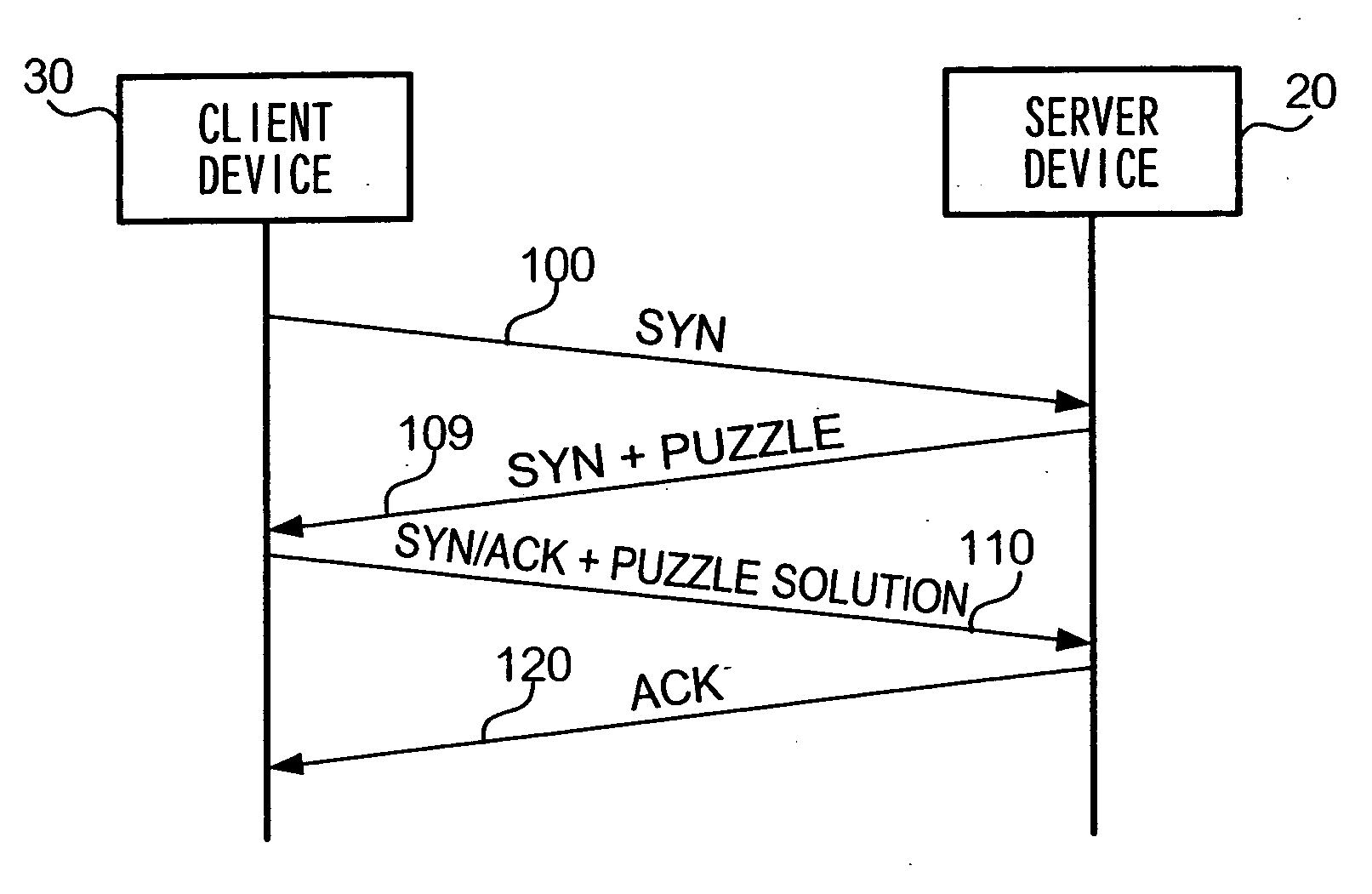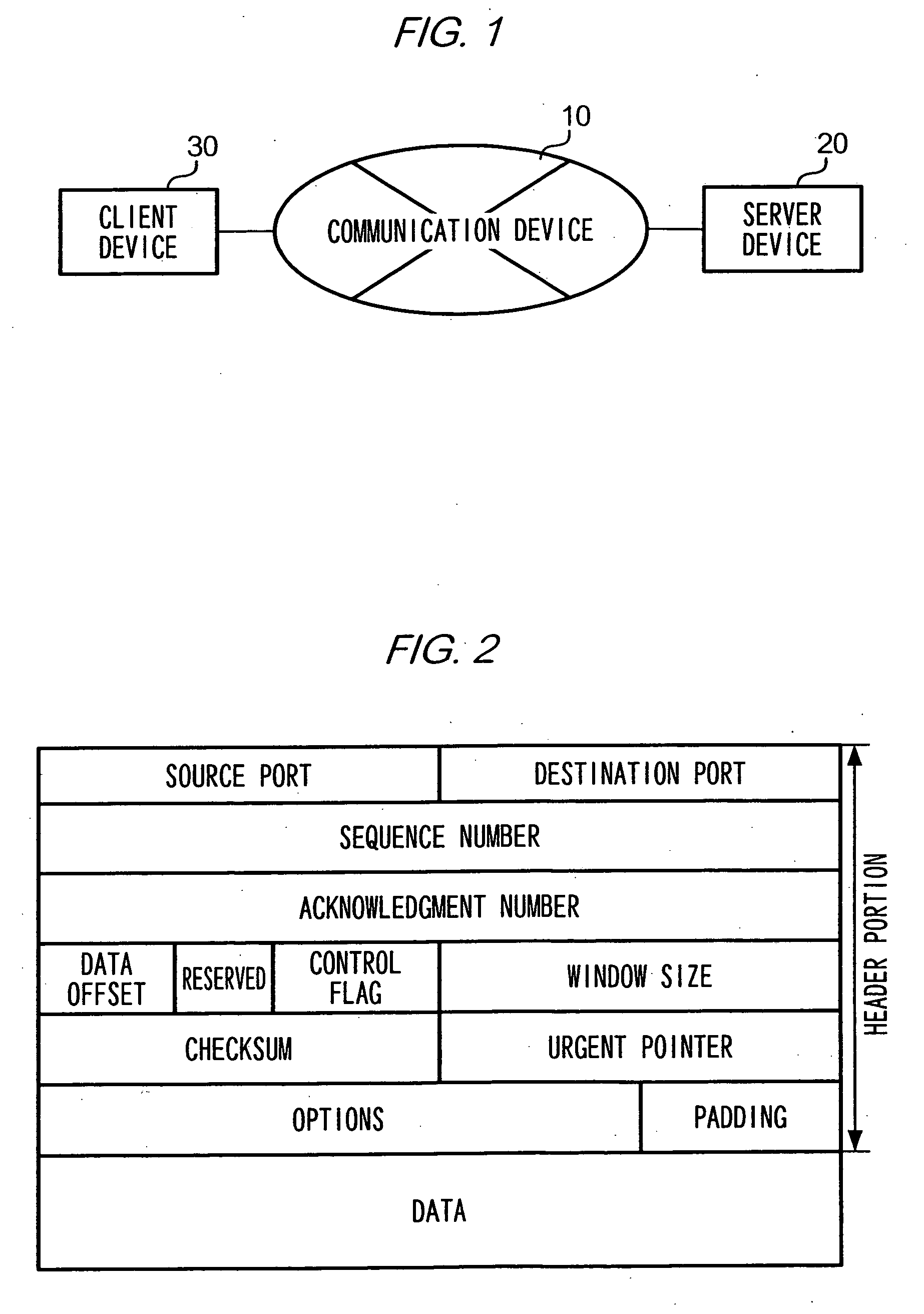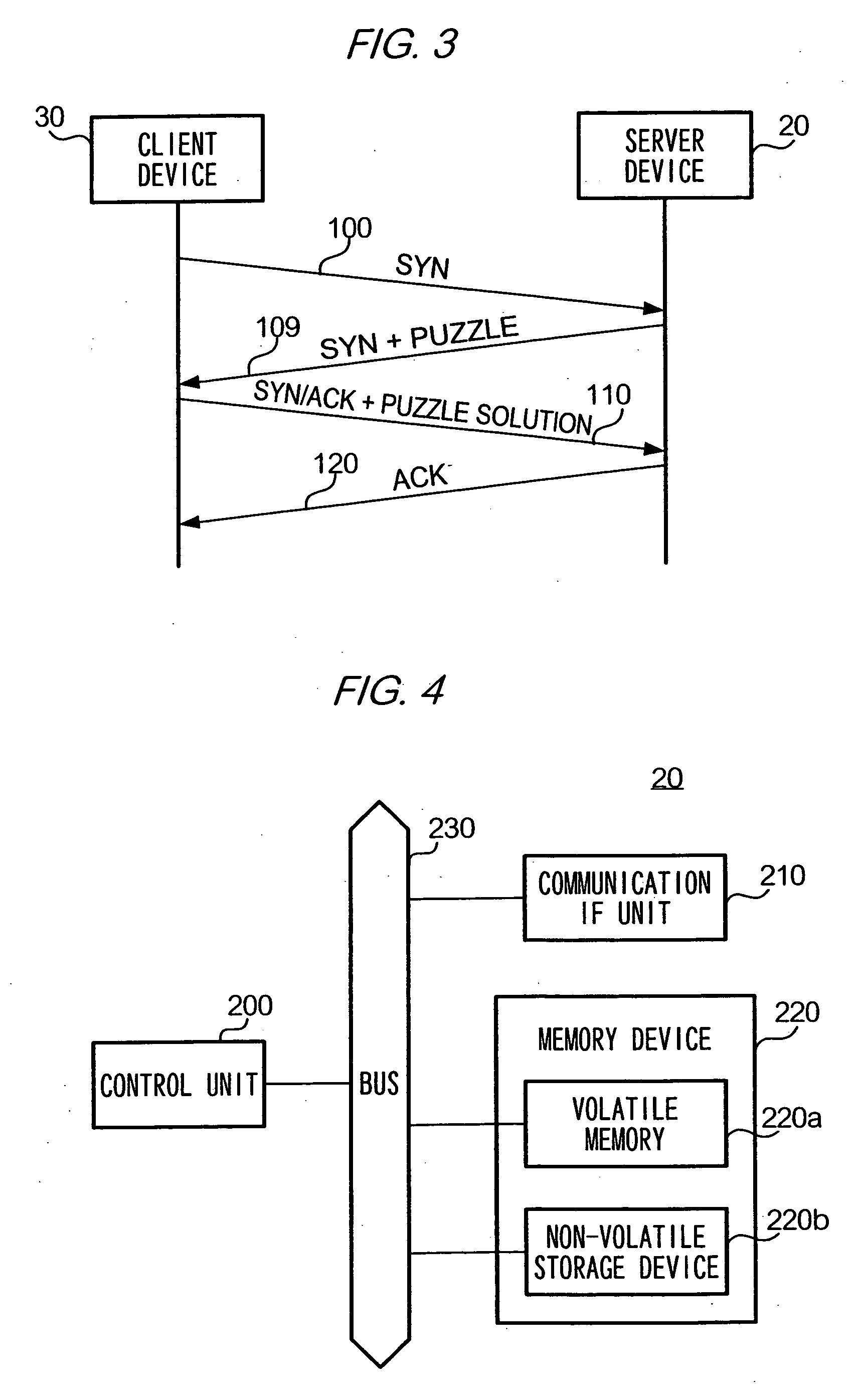Server device, client device, and process execution method
a server device and client device technology, applied in the field of server devices and client devices, can solve the problems of server abuse, the number of connection identifiers queued at the server soon reaches the upper limit, and the server resources are exhausted, so as to avoid the increase of communication traffic and shoulder the burden
- Summary
- Abstract
- Description
- Claims
- Application Information
AI Technical Summary
Benefits of technology
Problems solved by technology
Method used
Image
Examples
modification 1
[0104] C-1: Modification 1
[0105] In the above embodiment, description is given of a case where server device 20 and client device 30 are PCs which communicate according to TCP. Alternatively, server device 20 and / or client device 30 may be a PDA or a mobile telephone which communicates according to TCP. Any computer device may be used as long as it communicates according to TCP. Further, description is given in the above embodiment that server device 20 and client device 30 communicate according to TCP, but it should be obvious that any other communication protocol may be used.
modification 2
[0106] C-2: Modification 2
[0107] In the above embodiment, description is given of a case where solutions for client puzzles written in SYN message 109 are stored in association with the destination of SYN message 109 in server device 20. Alternatively, client puzzles such as in the following may be used, in which case solutions for the client puzzles need not be stored in server device 20.
[0108]FIG. 9 is a diagram for describing a client puzzle according to the present modification. As shown in the figure, according to the client puzzle, a hash value Ns is a value obtained by entering into a predetermined hash function H, a server secret, receipt time data showing a time at which SYN message 100 is received, and a source address (i.e., an IP address of client device 30). A hash value is then obtained by entering into the hash function H, the hash value Ns, a destination address (an IP address of server device 20), source and destination port numbers, an initial value of a sequence ...
modification 4
[0113] C-4: Modification 4
[0114] In the above embodiment, when a request is transmitted from a client device for establishing a connection, a server device establishes a connection on a priority basis depending on a level of difficulty of a client puzzle to be solved by the client device. However, a process performed by a server device in response to a request from a client device is not limited to a connection establishment process but may be a process of generating data according to a predetermined algorithm, storing the data (e.g., in a database), or forwarding the data to a given destination. It may be a process of transmitting a given data to a client device in response to a request from the client device.
[0115] Where the present invention is applied to a server device performing such a process of generating data according to a predetermined algorithm, the server device might receive, in the midst of executing a process for a client device, another request from another client ...
PUM
 Login to View More
Login to View More Abstract
Description
Claims
Application Information
 Login to View More
Login to View More - R&D
- Intellectual Property
- Life Sciences
- Materials
- Tech Scout
- Unparalleled Data Quality
- Higher Quality Content
- 60% Fewer Hallucinations
Browse by: Latest US Patents, China's latest patents, Technical Efficacy Thesaurus, Application Domain, Technology Topic, Popular Technical Reports.
© 2025 PatSnap. All rights reserved.Legal|Privacy policy|Modern Slavery Act Transparency Statement|Sitemap|About US| Contact US: help@patsnap.com



